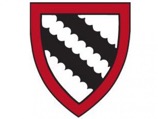Mathematics of clouds and climate change
William and Flora Hewlett Foundation Fellowship
Abstract
The world’s top climate scientists warn us that we are nearing a critical point of no return in climate change. While mitigation measures (such as the deployment of clean energy) are put into effect globally, strategies that can delay catastrophic climate destabilization are urgently needed. The primary tool for evaluating the effectiveness of these strategies are global climate models. These models have a major source of uncertainty: the representation of clouds and the complex effects of aerosols on clouds. High-resolutions clouds models exist but are computationally prohibitive for long-term climate simulations. I intended to explore some state-of-the-art computational approaches to enable computationally cheap cloud and cloud-aerosol interaction simulations without sacrificing accuracy.
Collaborators
Dr. S. Marras, New Jersey Institute of Technology
Dr. G. Rozza, SISSA
Michele Girfoglio, SISSA
Students Involved in the Project
Natalia Hajlasz, Undergraduate student (Harvard University)
Valeria Vela, Undergraduate student (Harvard University)
Yassine Tissaoui, Graduate student (NJIT)
Asma Dylan Ouerghi, Graduate student (NJIT)
Related publications
- L. Besabe, M. Girfoglio, A. Quaini, G. Rozza: Randomized Proper Orthogonal Decomposition for data-driven reduced order modeling of a two-layer quasi-geostrophic ocean model. Submitted.
arXiv:2504.15350 - A. Hajisharifi, M. Girfoglio, A. Quaini, G. Rozza: Combining extended convolutional autoencoders and reservoir computing for accurate reduced-order predictions of atmospheric flows. Submitted.
arXiv:2504.01097 - M. Khamlich, F. Pichi, M. Girfoglio, A. Quaini, G. Rozza: Optimal transport-based displacement interpolation with data augmentation for Reduced Order Modeling of nonlinear dynamical systems, J. Comput. Phys., 531:113938, 2025..
arXiv:2411.08750 | link - L. Besabe, M. Girfoglio, A. Quaini, G. Rozza: Data-driven reduced order modeling of a two-layer quasi-geostrophic ocean model. Results in Engineering, 25:103691, 2025.
arXiv:2408.16723 | link - M. Girfoglio, A. Quaini, G. Rozza: A comparative computational study of different formulations of the compressible Euler equations for mesoscale atmospheric flows in a finite volume framework, Computers & Fluids, 288:106510, 2025.
arXiv:2402.18136 | link - L. Besabe, M. Girfoglio, A. Quaini, G. Rozza: Linear and nonlinear filtering for a two-layer quasi-geostrophic ocean model, Appl. Math. Comput., 488:129121, 2025.
arXiv:2404.11718 | link - N. Clinco, M. Girfoglio, A. Quaini, G. Rozza: Computational study of numerical flux schemes for mesoscale atmospheric flows in a Finite Volume framework, Commun. Appl. Ind. Math., 15(1):106-122, 2024.
arXiv2402.19559 | link - A. Quaini, O. San, A. Veneziani, T. Iliescu: Bridging Large Eddy Simulation and Reduced Order Modeling of convection-dominated flows through spatial filtering: review and perspectives. Fluids, 9(8):178, 2024.
arXiv:2407.00231 | link - A. Hajisharifi, M. Girfoglio, A. Quaini, G. Rozza: A Comparison of data-driven Reduced Order Models for the simulation of mesoscale atmospheric flow, Finite Elements in Analysis & Design, 228:104050, 2024.
arXiv:2307.08790 | link - M. Girfoglio, A. Quaini, G. Rozza: GEA: a new finite volume-based open source code for the numerical simulation of atmospheric and ocean flows. In: Finite Volumes for Complex Applications X -- Volume 2, Hyperbolic and Related Problems, 151-159, Springer, 2023.
arXiv:2303.10499 - N. Clinco, M. Girfoglio, A. Quaini, G. Rozza: Filter stabilization for the mildly compressible Euler equations with application to atmosphere dynamics simulations, Computers & Fluids, 266:106057, 2023.
arXiv:2305.12978 | link - M. Girfoglio, A. Quaini, G. Rozza: Validation of an OpenFOAM-based solver for the Euler equations with benchmarks for mesoscale atmospheric modeling. AIP Advances, 13(5):055024, 2023.
arXiv:2302.04836 | link - Y. Tissaoui, S. Marras, A. Quaini, F. A.V. De Braganca Alves, F.X. Giraldo: A non-column based, fully unstructured implementation of Kessler's microphysics with warm rain using continuous and discontinuous spectral elements. J. Adv. Model. Earth Syst., 15(3):e2022MS003283, 2023.
arXiv:2207.02190 | link - M. Girfoglio, A. Quaini, G. Rozza: A linear filter regularization for POD-based Reduced Order Models of the quasi-geostrophic equations. Comptes-Rendus Mecaniques, 351(S1):1-21, 2023.
arXiv:2211.16851 | link - M. Girfoglio, A. Quaini, G. Rozza: A novel Large Eddy Simulation model for the Quasi-Geostrophic Equations in a Finite Volume setting, J. Comput. Appl. Math., 418:114656, 2023.
arXiv:2202.00295 | link - M. Girfoglio, A. Quaini, G. Rozza: A POD-Galerkin reduced order model for the Navier-Stokes equations in stream function-vorticity formulation, Computers & Fluids, 244:105536, 2022.
arXiv:2201.00756 | link
Other publications produced during the fellowship year but related to other projects
- N. Bellomo, J. Liao, A. Quaini, L. Russo, and C. Siettos: Human behavioral crowds review, critical analysis, and research perspectives. Math. Models Methods Appl. Sci., 33(8):1611-1659, 2023.
link. - M. Hess, A. Quaini, G. Rozza: Data-Driven Enhanced Model Reduction for Bifurcating Models in Computational Fluid Dynamics. Adv. Comput. Math., 49, 22, 2023.
arXiv:2201.10872 | link - C. Balzotti, P. Siena, M. Girfoglio, A. Quaini, G. Rozza: A data-driven Reduced Order Method for parametric optimal blood flow control: application to coronary bypass graft. Commun. Optim. Theory, 2022:1-19, Article ID 26, 2022.
arXiv:2206.15384 - M. Hess, A. Quaini, G. Rozza: A data-driven surrogate modeling approach for time-dependent incompressible Navier-Stokes equations with Dynamic Mode Decomposition and manifold interpolation. Adv. Comput. Math., Accepted..
arXiv:2201.10872 - Y. Wang, Y. Palzhanov, A. Quaini, M. Olshanskii, S. Majd: Lipid domain coarsening and fluidity in multicomponent lipid vesicles: A continuum based model and its experimental validation. BBA - Biomembranes, 1864(7):183898, 2022.
arXiv:2111.03022 | link - M. Olshanskii, Y. Palzhanov, A. Quaini: A comparison of Cahn-Hilliard and Navier-Stokes-Cahn-Hilliard models on manifolds. Vietnam Journal of Mathematics, 50:929–945, 2022.
arXiv:2110.15873 | link - N. Bellomo, L. Gibelli, A. Quaini, and A. Reali: Towards a mathematical theory of behavioral human crowds. Math. Models Methods Appl. Sci., 32(2):321-358, 2022.
link
Software
The software used for the simulations in the above papers is:
DROPS, distributed under the GNU Lesser General Public License.
